Don't wanna be here? Send us removal request.
Photo
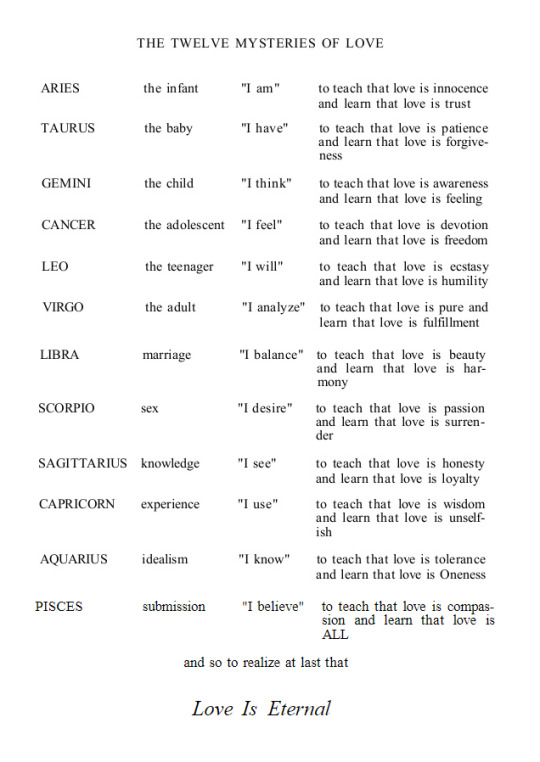
Linda Goodman’s Love Signs
Tag your sun sign!
34K notes
·
View notes
Text
Chano, Chatham’s Own
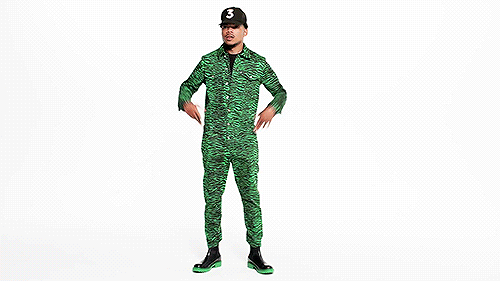
Who is Chance the Rapper?
Chancelor Johnathan Bennet, also known as Chance the Rapper or Chano, is a hip-hop artist from a middle-class neighborhood of West Chatham on Chicago’s South side. Chance is known for his distinctive and unparalleled sound and style. In just a few years he has become one of the most popular rapper’s in today’s time in the most seemingly effortless way. “How did he do it?” is the question every one is asking. Discussing everything from his first mixtape, 10 Day, which he created following a 10-day suspension from high school, to his latest modeling of the “Thank You Obama” clothing line, this blog will examine the rise of this modern artists widespread influence, the evolution of his persona and work, and, most importantly, what makes Chance the Rapper such a well-liked, marketable entertainer.
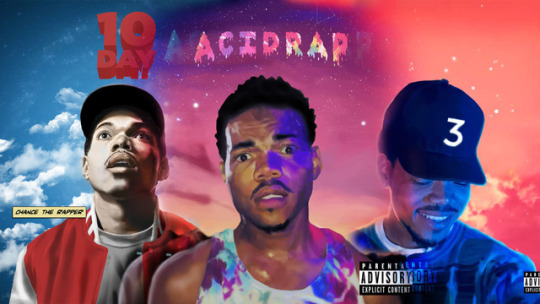
The Rise and Evolution of Chano
It seems like just a few years ago when not many people knew or heard of Chance the Rapper but now, if you ask just about anyone (including adults) they will be familiar with the name. In order to fully understand Chance as an artist, it is important to discuss the rise of Chance and his music and at what point in his career he became well known. Another piece of background information that needs to be included about Chance is about how much he and his music has changed. Numerous artists evolve throughout their music careers. Countless of musical entertainers change their sound, their lyrics, or even their entire image, but comparing Chance’s identity in the beginning to his current reputation can almost seem like two entirely different artists. Both the rise and evolution of Chance play a key role in understanding exactly what makes him such a popular artist.
10 Day
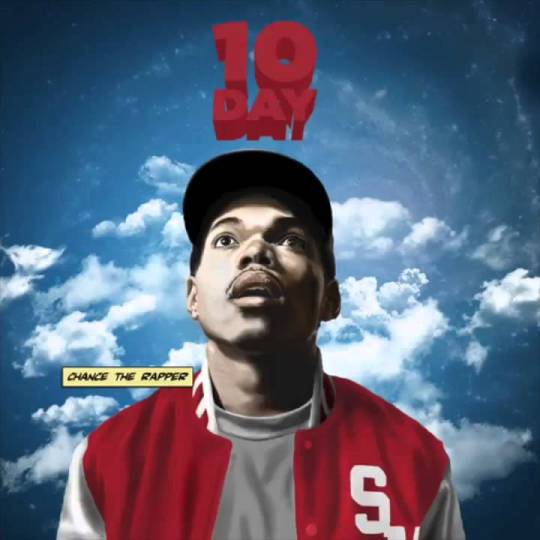
youtube
Let’s start with Chance’s mixtape, 10 Day. This mixtape, as I mentioned before, was written while Chance was on a 10-day suspension in school for possession of marijuana. Clearly, Chance wasn’t what we would call a “popular artist” at the time, so he released the mixtape free on DatPiff, an online mixtape distribution platform. In other words, Chance put out some dope underground shit that hardly anyone knew existed…at least at first. Overtime, the mixtape generated a fair amount of attention from critics and many music media outlets. Currently, the mixtape has been streamed nearly 600,000 times and downloaded over 400,000 times on DatPiff. Now, compared to his latest mixtape, Coloring Book, these numbers are negligible, but for his first mixtape ever released I’d say he was off to a good start. When it comes to the content of the mixtape, it contains all of the subjects and topics you would expect from a high schooler’s rap mixtape released while on suspension. The mixtape touches on in-school delinquency, money, and, of course, drugs- lots of them. All of these elements listed have been known to attract the youth for years. Many times, marketers and entertainers use this knowledge to their advantage and purposely incorporate this type of content into their works, but that is one feature that separates Chance from the rest of the entertainment population. When Chance was creating this mixtape, he wasn’t spending his time writing and creating songs to attract the youth; Chance was the youth. He had everything he needed right in front of him. He was just an 18-year-old with talent flowing through his veins, recording the reality of his every day life as a teenager in Southside Chicago, while using beautiful rhymes and rhythms in the process. Listen to this mixtape once and it is absolutely clear that Chance is something special and unforgettable, but this was just the beginning. 10 Day was the first step in the creation of Chance the Rapper today.
Acid Rap

youtube
After 10 Day, just one year later Chance released a new mixtape called Acid Rap (my personal favorite)… I’ll leave it up to you to assume why he called it that. This second mixtape was also released as a free digital download again on DatPiff. Currently, the mixtape has been certified as “diamond” for reaping over 1,000,000 downloads. The mixtape was also nominated for Best Mixtape at the 2013 BET Hip Hop Awards, number 26 on Rolling Stone’s list of the 50 best albums of 2013, and first on their list of best mixtapes of 2013. Chance quickly picked up the pace and created a much larger fan base in just one year, but just like his creation of 10 Day, he wasn’t doing it for the fame, or at least he didn’t seem like it. It has been a common idea that popular music seems to be “re-used” over the years and that many artists steal ideas or sounds from other popular musicians in the past. This is another detail that seems to make Chance stand out from all of the other “popular” artists: He is unrepeatable. His vocals and lyrics are unusual, but in the best way possible. He is unconventional, inventive, and simply groundbreaking. This is one of the main reasons I wanted to focus my blog on Chance particularly and that is because he stands out from every other common popular artist. He breaks all of the rules and still manages to be just as successful. Acid Rap is one of the perfect examples to exhibit Chance’s originality and his nonconformist manner.
Coloring Book
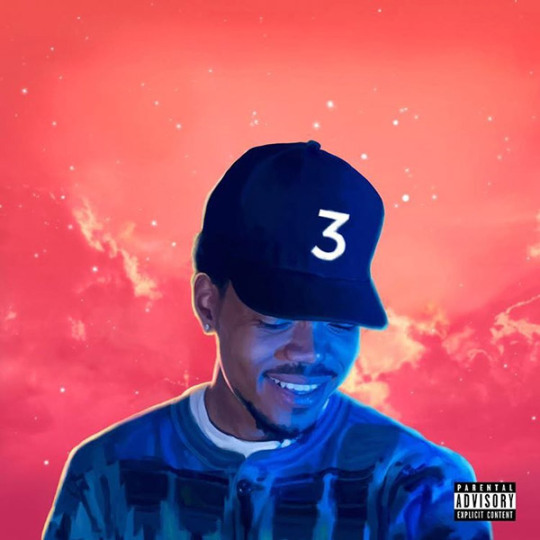
youtube
Lastly, but definitely not least, Coloring Book the mixtape was released by Chance 3 years after Acid Rap. This Hip Hop/GOSPEL RAP mixtape is where Chance earned most of his recognition...what a surprising change in the substance of his music, right? There were many other popular musicians that Chance also collaborated with on the mixtape such as Justin Bieber, Young Thug, Kanye West, and Kirk Franklin. This mixtape, however, was not released on DatPiff like the other two, but instead was released exclusively on Apple Music before being made available to other streaming services. This album was the first album to chart on the Billboard 200 solely on streams; it received a nomination for Best Rap Album at the 2017 Grammy Awards, and was also the first streaming-only album to ever receive a Grammy nomination. Those are some pretty staggering facts considering just a few years ago he was just a common wanna-be rapper from Chicago. Before this mixtape, streaming-only albums could not be considered for a Grammy, but just a short month after Coloring Book was released the rule changed. Now, the Grammy’s insist it wasn’t specifically a rule change for Chance, but it is quite coincidental. Something that is not coincidental contained in this mixtape, though, is the presence of spiritual and Christian themes. Chance told Zane Lowe in an interview, “I never really set out to make anything that could pretend to be new gospel or pretend to be the gospel,” he said, “It’s just music from me as a Christian man.” The interviewer, Lowe, said that the mixtape showcased how “faith in music and faith in God go hand-in-hand a lot of times.” It goes without saying that Chance and his music have evolved a great deal over the course of his three main mixtapes. He went from songs focused mainly about drugs in his first mixtape to a mixtape with a song containing the lyrics “We don’t do the same drugs anymore.” It is also interesting to me that the mixtape that contained the least amount of stereotypical themes that attract the youth ended up being Chance’s big break and attracting tons of young people. Maybe, just maybe, everyone has it all wrong about what attracts the youth. Here’s another example of Chance breaking the normal stereotypes and ending up successful, and I couldn’t be more satisfied.
Omnipresence throught the Internet
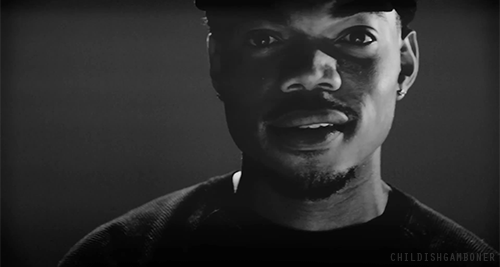
Over time, as we’ve discussed and read throughout class, music has become ubiquitous. It seems to be everywhere, all of the time, and I think this certainty has a lot to do with Chance being able to fully expand his music and his career. As stated earlier in the blog, Chance first began releasing his music for free on DatPiff. DatPiff isn’t necessarily considered a popular place for people to obtain their music, but at the same time it reaches people who normally wouldn’t be able to pay for the music. This brings up an important point of ubiquity in music on the Internet. Personally, I believe that the Internet is the most effective way, in current times, for music to be circulated in the population. It allows music to reach people in ways that never would have been possible in the past, and Chance definitely took advantage of this feature.
Not only has Chance taken advantage of DatPiff but he also has produced a great deal fans throughout his usage of social media, specifically Twitter. Chance currently has 3.03 Million followers on his twitter and that number continues to grow. Just last week he released the first official music video for “Same Drugs” on his twitter profile and it generated tons of buzz. Many artists, not just including Chance, have started utilizing their social media accounts to deliver word about their upcoming music, current projects, or just what they’re up to on a daily basis. Nowadays, our favorite music artists are everywhere every time we open our phone or get on the computer. The music business keeps finding ways to expand, and in more ways than one. The Internet, however, seems to be the most favored at the moment.
All About the Merch.
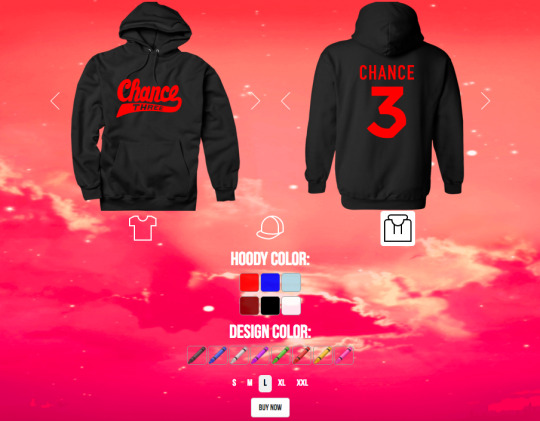
Many artists have their own line of merchandise, and Chance the Rapper happens to fall into the category as one of those rappers. Chance has his own website, http://chanceraps.com/shop/ where he sells everything from hats to hoodies to lighters. Normally, artists clothing and merchandise doesn’t really look like articles that normal people would buy and or wear, but Chance’s line is different. His clothes actually look stylish. In fact, I see a good amount of students on my college campus reppin’ different Chance attire every day. Every time I see the classic “3” I know that they’re a Chance the Rapper fan. Is this a form of advertisement? I’d say so. The “3” is known to most people now as his logo. It’s also a way that Chance makes money because, honestly, he needs it. He’s released countless of his music for free, and even goes out of his way to make sure everyone has a way to listen to his music. I think that his merchandise is extremely important for him to continue succeeding as an artist, since he’s kind enough to allow the majority of his other work to be available to all.
Advertisment
youtube
Besides using his own merchandise for advertising, Chance has also been involved in advertising for other companies. One ad in particular for Kit Kat includes Chance the rapper singing the Kit Kat jingle in the commercial, one time in regular clothes and a Halloween version of him in a costume. As mentioned in the reading for class by Taylor, jingles have been used countless times in the history of advertising as a way of getting consumers to think about the product without even realizing it. The jingles are catchy and a very effective way of publicizing a product. I think it was a perfect combination to mix this catchy jingle with Chance’s distinct voice because it gives the jingle a different sound than it’s ever had before, while still remaining catchy at the same time. This is probably Chance’s biggest advertising break.
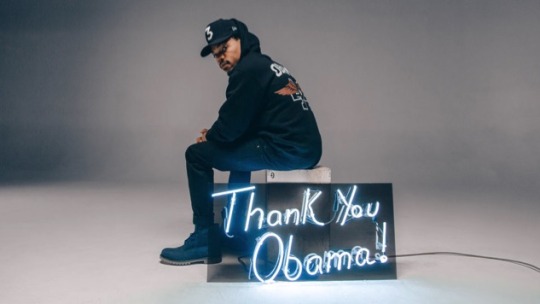
Another recent opportunity Chance had to become an advertising icon is when he modeled for the “Thank You Obama” clothing line. Recently, the company released a couple of shirts, hoodies, etc. that all contained text or pictures thanking Obama for his time in office (not going to lie, I bought one). I think Chance was a perfect selection to model this type of clothing line because I feel like most of his listeners coincided with Obama’s followers. Also, using myself as an example, if Chance never modeled the clothing I probably would have never known that it existed…and guess where I saw the pictures? Twitter. Once again Chance took advantage of social media to create a platform for this new clothing line. I guarantee Chance will see many more opportunities like this in the future, since it seems like he gains more and more fans every day.
No Label, No Problem
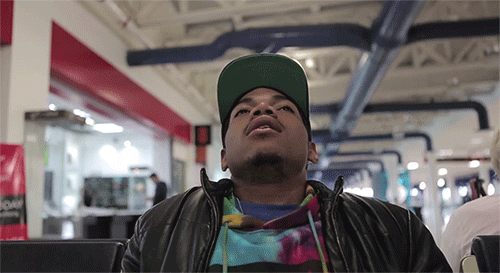
One last aspect that has created tons of widespread discussion about Chance is that he refuses to sign a record label. He is one of the very few “independent” popular artists left in our current generation. This is his reasoning. He said in an interview with MTV, “Man, I can’t even say. People have hit us up. There’s a lot of interest in what we have going on. I try to distance myself from it because I’m not interested in too much right now other than pushing this free album,” he said. “There’s a lot of people who are super thirsty right now. It’s dope people want to partner up, but I’m a very tunnel vision guy. I have so much shit on my plate all the time that I try and focus on things one at a time.” This viewpoint of Chance is just so respectable. He’s trying to work on his own, for his own so he can say he did it by himself and I think these actions of his are extremely commendable. I mean he even turned down a deal from Kanye West, one of his biggest idols. Not many other artists can say that they have done all that Chance has done without the help of a record label, which is just another reason so many people look up to Chance and consider him a phenomenal artist.
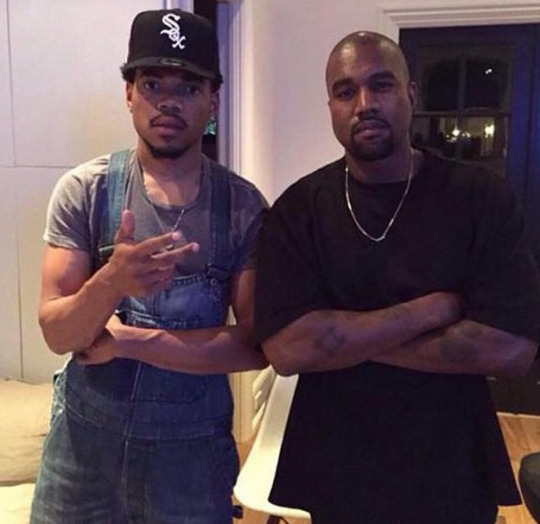
Although, even though Chance hasn’t signed a label yet, that’s not to say he hasn’t received a great amount of aid from other famous artists on his conquest to success. Specifically, Kanye West has had a great impact on the reputation of Chance. As mentioned before, Kanye offered Chance a record deal but he turned it down. Together they still worked on Kanye’s album, The Life of Pablo and he helped Chance produce Coloring Book. Beside Kanye, Chance has been connected in many ways to other artists like Childish Gambino, Action Bronson, Lil Wayne and Beyoncé. Yes, Chance has done most of his work on his own, but it’d be wrong to say he didn’t gain leverage from being connected to other popular artists.
Creating History
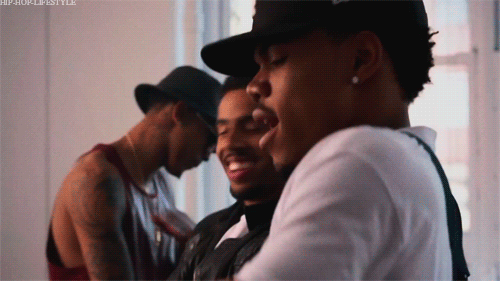
Even though there is tons more to say about Chance, I think a good amount of information has been presented so far. Chance has become one of the most well known Hip Hop artists of our time for many reasons, he’s been exposed to the commercial and advertising world already, and he continues to grow as an artist with every piece he releases. I’m very excited to see how much he and his music continues to evolve, and I am grateful to say I’ve been with him since the beginning. Chance the Rapper is creating history.
Works cited
"50 Best Albums of 2013". Rolling Stone. December 2, 2013. Retrieved February 8, 2017.
Alexis, Nadeska. "Chance The Rapper: There Was 'A Lot Of Acid Involved In Acid Rap'." MTV News. MTV. May 10, 2013. Retrieved February 8, 2017.
"Chance The Rapper Drops Acid". Interview Magazine. Retrieved February 6, 2017.
"Datpiff Acid Rap". Datpiff.com. 2014. Retrieved February 8, 2017.
Gopinath, Sumanthand, and Jason Stanyek. "Anytime, Anywhere? An Introduction to the Devices, Markets, and Theories of Mobile Music." Oxford Handbooks. 14 Apr. 2015. Web. Retrieved February 8, 2017.
"Here Are The BET Award Nominees". Complex. August 22, 2013 Retrieved February 8, 2017.
Kit Kat® USA Commercial 2016 | “Chance the (W)rapper” :30s. Perf. Chance the Rapper. Youtube. N.p., 1 Nov. 2016. Web. Retrieved February 8, 2017.
Leor, Galil. "Cheap Tunes: Chance The Rapper's '10 Day'". Forbes. Retrieved February 7, 2017.
Orcutt, KC. "Chance the Rapper Admits Turning Down Deals From Kanye West Was 'Not Easy at All'." BET.com. 22 Dec. 2016. Web. Retrieved February 8, 2017.
Sarachik, Justin (May 26, 2016). "Chance the Rapper Losing God Helped Him Create Music as 'Christian Man'". Rapzilla. Retrieved October 23, 2016.
Shamison, Jacob. "A 23-year-old Rapper Who Refuses to Sign a Record Deal Is Tearing up the Hip-hop World All by Himself." INSIDER. 16 June 2016. Web. Retrieved February 8, 2017
Taylor, Timothy D. "The Sounds of Capitalism." University of Chicago Press. N.p., 2012. Web. Retrieved February 8, 2017.
Unterberger, Andrew (December 6, 2016). "Grammy 2017: The Complete List of Nominees". Billboard. Retrieved February 8, 2017.
Weiss, Jeff (May 7, 2013). "Chance The Rapper: Acid Rap". Chicago: Pitchfork Media. Retrieved February 5, 2017.
Willman, Chris. "Grammys Insist Streaming-Related Rule Change Wasn't Inspired By Chance the Rapper." Billboard. October 6, 2016. February 8, 2017
0 notes